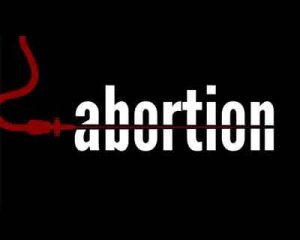- Home
- Editorial
- News
- Practice Guidelines
- Anesthesiology Guidelines
- Cancer Guidelines
- Cardiac Sciences Guidelines
- Critical Care Guidelines
- Dentistry Guidelines
- Dermatology Guidelines
- Diabetes and Endo Guidelines
- Diagnostics Guidelines
- ENT Guidelines
- Featured Practice Guidelines
- Gastroenterology Guidelines
- Geriatrics Guidelines
- Medicine Guidelines
- Nephrology Guidelines
- Neurosciences Guidelines
- Obs and Gynae Guidelines
- Ophthalmology Guidelines
- Orthopaedics Guidelines
- Paediatrics Guidelines
- Psychiatry Guidelines
- Pulmonology Guidelines
- Radiology Guidelines
- Surgery Guidelines
- Urology Guidelines
Number of abortions in mother linked to number of abortions in teenage daughters

In a population-based cohort study it has been found out that the greater number of abortions in the mother, the greater is the number of abortions in her teenage daughter. The study has been published in CMAJ (Canadian Medical Association Journal). Previous Research conducted in past had shown that there was an association between mothers and daughters in the timing of a first pregnancy ending in a live birth and in the present study the researchers wanted to find whether the same tendency exists for pregnancies ending in an induced abortion.
In developed countries, approximately 6.7 million abortions are performed every year, with a large proportion performed on teens aged 19 years or younger. In Canada, the teen pregnancy rate is 28 per 1000, with more than 50% of these ending in abortion.
The large study included data on 431 623 daughters born in Ontario obtained from the Institute for Clinical Evaluative Sciences (ICES) and linked to other databases that provided information on mother-daughter pairs. There were 73 518 daughters whose mothers had had at least one abortion (exposed group) and 358 105 daughters whose mothers had none (unexposed group). In the exposed group, the probability of having an abortion during their teenage years was 10.1%, compared with 4.2% in the unexposed group. As the majority of those abortions (94.5%) occurred before 15 weeks gestation, it's unlikely that the reason was a genetic or birth defect in the fetus in most cases and it may be reasonable to assume social indications.
There was also a dose-response effect: the greater number of abortions in the mother, the greater the number of abortions in her teenage daughter.
"We don't know what factors cause this association, as it was beyond the scope of our study," says Ning Liu. "Previous studies have found a higher likelihood of teen abortion if a young woman has greater social challenges, including poor school performance, separation from a biological parent, lower parental education, and receipt of income support."
"Further research is needed to determine if strategies that engage parents could reduce unprotected sex in teens, as well as to understand the major factors that contribute not only to teen pregnancy but also to the decision to have an abortion or maintain a pregnancy," says Dr. Ray. "Whatever the pregnancy outcome, the need to advocate for the health of a young woman is paramount."
Study limitations include a lack of information on the fathers, the marital status and education levels of both mother and daughter, or family dynamics and attitudes.
"Intergenerational abortion tendency between mothers and teenage daughters: a population-based cohort study" is published January 29, 2018.

Disclaimer: This site is primarily intended for healthcare professionals. Any content/information on this website does not replace the advice of medical and/or health professionals and should not be construed as medical/diagnostic advice/endorsement or prescription. Use of this site is subject to our terms of use, privacy policy, advertisement policy. © 2020 Minerva Medical Treatment Pvt Ltd